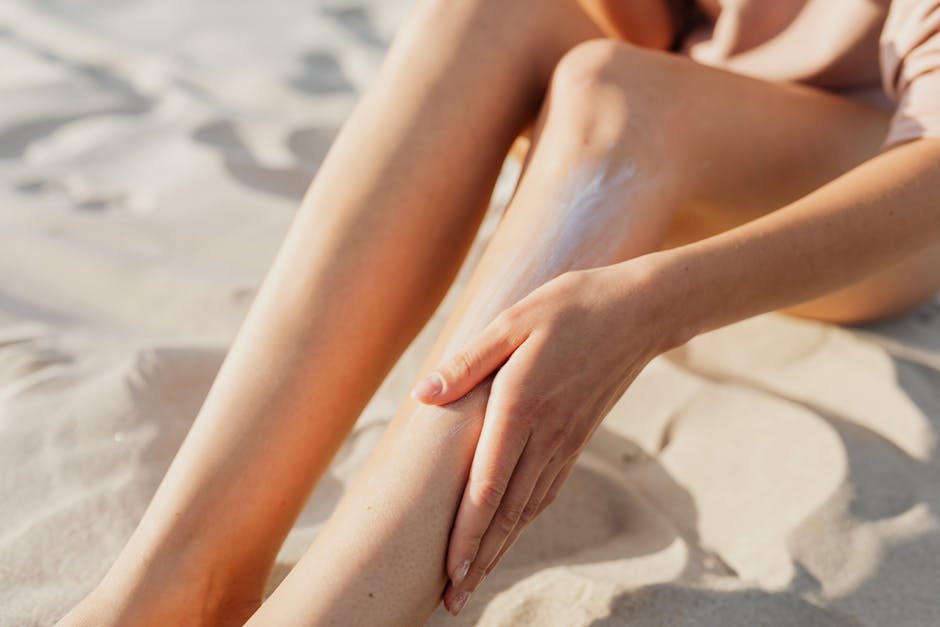
Stop Overlooking This SPF Rule Before You Regret It
Think you're doing sunscreen right? Most people apply it too late, too little, or skip key areas — resulting in premature aging, dark spots, or worse. If you commute, work outside, or even sit near windows, it's time to upgrade your SPF strategy. Here’s how to properly apply sunscreen for maximum protection — especially if you have sensitive skin.
Why SPF Application Still Goes Wrong
Despite awareness about sun damage, up to 70% of adults misuse sunscreen daily. Maybe it’s the confusing labels, unclear reapplication times, or forgetting those easy-to-burn zones like ears and neck. Over time, these gaps cause cumulative damage — leading to sunspots, rough texture, and increased risk of skin cancer.
“Daily sun exposure adds up — even through car windows or cloudy skies.”
If you’re seeing dullness, uneven tone, or feel your skincare isn't working — your SPF routine may be to blame. The good news? Fixing it is simple and powerful.
How to Properly Apply Sunscreen
The right way to apply sunscreen starts with using the correct amount, applying it early enough, and reapplying consistently. This ensures a protective barrier is fully formed before UV rays hit your skin.
- Apply 15–30 minutes before sun exposure to allow absorption.
- Use a nickel-sized amount for the face and one ounce (a shot glass) for the body.
- Don’t skip ears, neck, eyelids, and hands.
- Reapply every 2 hours — more often if sweating or swimming.

Top 7 Common Sunscreen Mistakes
- Only applying sunscreen when it’s sunny
- Using makeup with SPF as your only sun protection
- Not reapplying after sweating or being outdoors
- Using expired sunscreen
- Skipping lips, scalp, and eyelids
- Not layering sunscreen under makeup properly
- Relying on SPF in foundation alone
Choosing Sunscreen for Sensitive Skin
If you have easily irritated or reactive skin, using a dermatologist recommended sunscreen for sensitive skin can make all the difference. Look for mineral (physical) sunscreens with zinc oxide or titanium dioxide and no added fragrance or alcohol.
| Feature | Chemical Sunscreen | Mineral Sunscreen |
|---|---|---|
| Active Ingredients | Avobenzone, Octinoxate | Zinc Oxide, Titanium Dioxide |
| Best For | Normal, oily skin | Sensitive, acne-prone skin |
| Irritation Risk | Moderate | Low |
Bonus tip: Mineral sunscreens also start working immediately — no wait time needed.
Sun Safety Tips for Summer
Wearing sunscreen is just part of the puzzle. For comprehensive defense, combine it with other sun safety tips for summer to shield your skin from long-term damage.
- Wear wide-brimmed hats and UV-blocking sunglasses
- Seek shade between 10 a.m. and 4 p.m.
- Use UPF clothing for extended outdoor exposure
- Stay hydrated to support skin health
- Keep sunscreen in your bag, car, or desk for easy reapplication

FAQs
How much sunscreen should I use on my face daily?
Use about a nickel-sized amount — roughly 1/4 teaspoon — to cover your entire face effectively. Don’t forget areas like your ears and hairline.
Can I apply sunscreen after moisturizer?
Yes. Sunscreen should be the final step in your skincare routine before makeup — after moisturizer and serums.
What’s the best sunscreen for sensitive skin?
Look for mineral sunscreens labeled “broad-spectrum” with zinc oxide or titanium dioxide. Avoid products with fragrance, alcohol, or parabens.
Pillar Article: Sunscreen Protection Levels: Are You Using Enough?
Other Related Articles:
- Think SPF 15 Works? Here’s the Science That Says Otherwise
- SPF 50 vs 30: The Mistake That’s Costing You Coverage
Explore More:



0 Comments